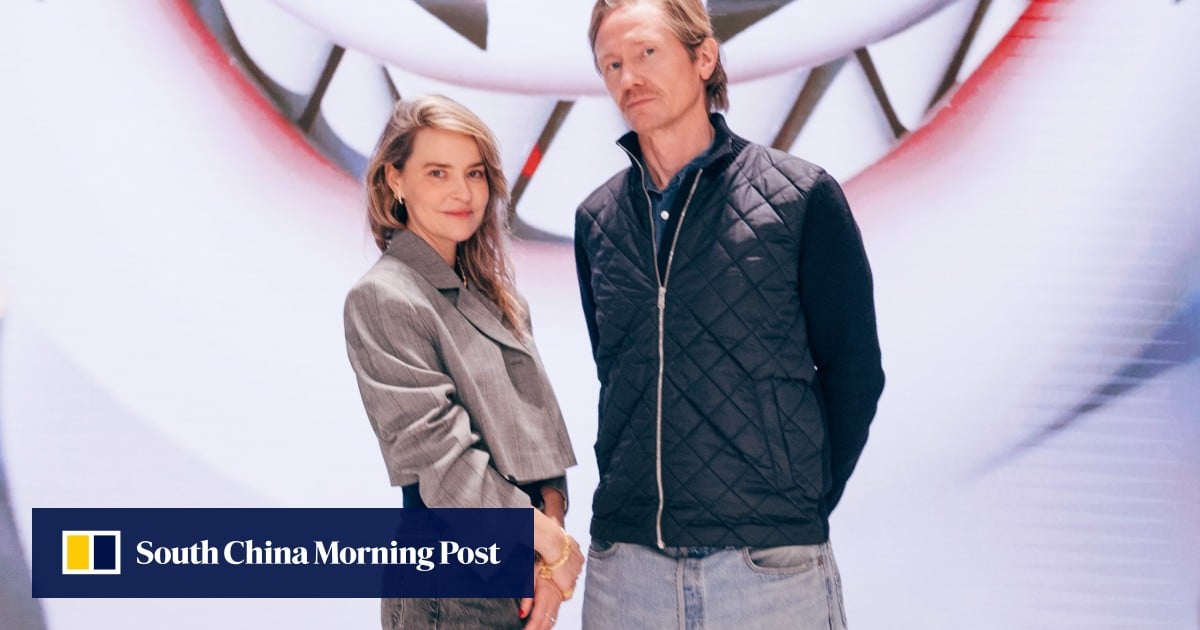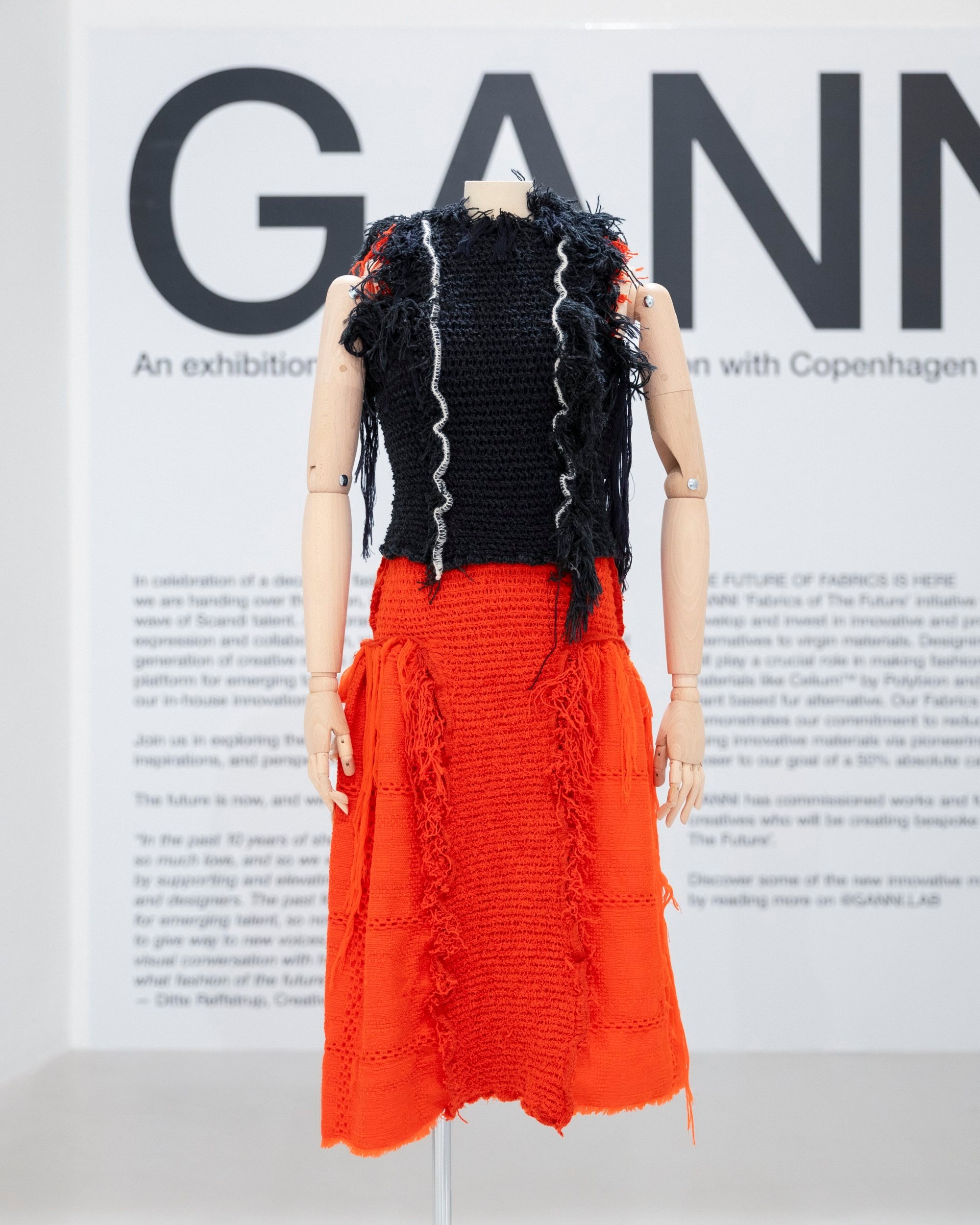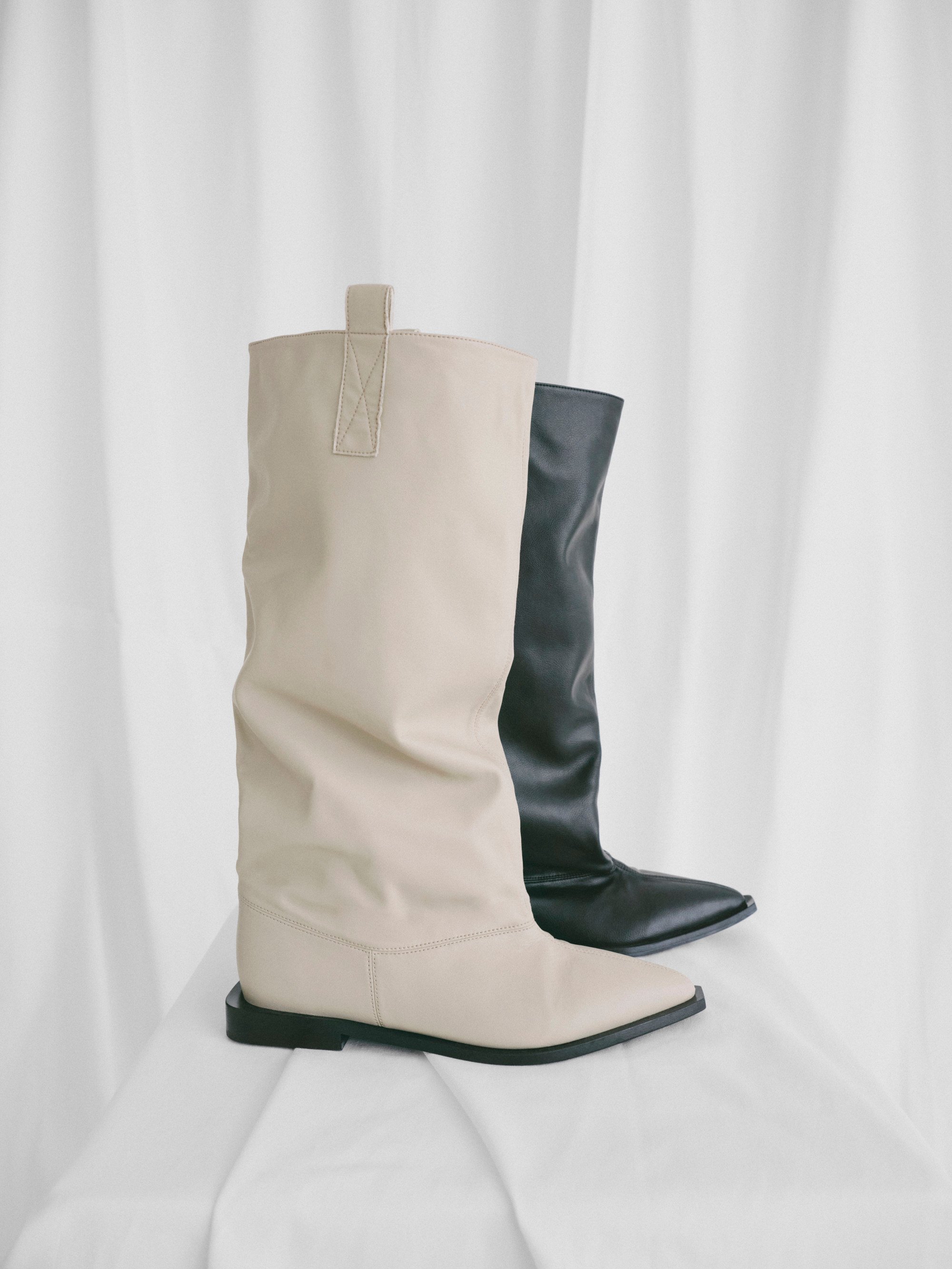Fashion
Meet the Reffstrups, the husband and wife team behind fashion brand Ganni

By day, however, the church houses Ganni’s latest collection for buyers to view, along with a photogenic cafe. There’s also “Future, Talent, Fabrics”, an exhibition of local up-and-coming designers, as well as the literal fruits of work by the business’ Fabric of the Future initiative – Ditte’s mango leather rendition of the hit Bou bag included.
Very superstitious: fashion’s long love affair with lucky charms – from Coco to Dior
Very superstitious: fashion’s long love affair with lucky charms – from Coco to Dior
“We’re in a funny place: big brand, medium business,” Nicolaj tells Style, recounting a recent trip the couple took to Africa, where they met fellow visitors from around the globe and were struck by the extent to which Ganni’s reputation preceded its actual size.
“They were star-struck when they met Ditte and told us to open stores in the US and Mexico. But we’re still doing €170 million [in sales, US$185 million] per year. It’s a great business, don’t get me wrong, but it’s not that much.”

He is, in part, being humble. Fifteen years on, the business the husband-wife duo now respectively lead as CEO and creative director has become one of Danish fashion’s most notable exports, employing some 500 people worldwide. This year, the business is looking to amp up its presence in mainland China, where the brand already runs eight boutiques.
Born in heels: Kristina Blahnik is building on uncle Manolo’s legacy
Born in heels: Kristina Blahnik is building on uncle Manolo’s legacy
Ganni is perhaps best known for being the mid-market, unofficial uniform of the Gen Z Danish girl and those who aspire to dress like her. But this prototype was amorphous when the Reffstrups took the leap. “It took us a long time to figure out who she truly was – you go to Paris and LA, and find bigger personas,” says Nicolaj. Ultimately, the duo rooted their Danish style in mobility, freedom and empowerment – values that in a country on the forefront of gender equality and with its capital, Copenhagen, famously bike-friendly, resonate with visitors and locals alike.

Though fans and onlookers will recognise Ditte’s touch in the mishmash of optimistic prints, playfully twee accents and streetwear nods the brand has become known for, she describes Ganni’s inception as not precipitated by a visual look but by a “very clear and simple” need. “The way the Copenhagen girl dressed at the time was either androgynous or bohemian, and I couldn’t recognise myself in that,” says the designer, whose background was in buying. “The community, the girls I was surrounded by, they were not represented in the international fashion scene,” she adds.
While Ditte describes the brand’s current offering as more grown up, thanks largely to the addition of categories like denim, suiting and accessories, she insists that the heart of the brand has been a constant. “We want the person behind the clothes to be the one you see. It’s important that you can express yourself and feel confident in what you’re wearing – that philosophy hasn’t changed.”

Unlike Ditte, Nicolaj’s background was in tech, and he adopted that sector’s growth-focused approach to business when it came to Ganni’s road map. “My only condition was that we would aim to grow a global brand,” he says, adding that the market was rife with local brands that would lose momentum and novelty years later. “So, we’ve always aimed for a global reach, and we’ve sacrificed a lot of commercial gains to get there and position ourselves that way.”
Making waves: surfer girl fashion is back – from Chanel to Miu Miu
Making waves: surfer girl fashion is back – from Chanel to Miu Miu
According to the duo, their backgrounds rendered them outsiders in Ganni’s early days, when they worked out of the corner of the apartment belonging to Frans Truelsen, a friend and Ganni’s previous owner. That’s partly why the brand abstained from the show schedule this season, and instead partnered with CFW to showcase up-and-comers like CFW New Talent graduate Nicklas Skovgaard and provide them with access to what the brand term its “Fabrics of the Future” arsenal of sustainable alt-textiles.

“We’ve been doing shows for 10 years,” says Ditte. “We wanted to give something back to Copenhagen, to the community. And it’s always been about the team and inviting people into the brand and working across industries, so I had this idea to bring in new talent and give our platform to new voices.”
Indeed, mango slime leather isn’t the most glamorous of propositions, but Nicolaj is aware of the education and awareness needed to normalise and scale new textiles. “You need to work closely with start-ups, and not all small brands have the resources to do so. That’s what we thought we’d do – give them access and let them play around with the fabrics.”

Beyond its textile R&D, Ganni has been reinforcing its responsible business practices: launching re-sale in 2022; only using recycled, reusable or recyclable packaging; publicly listing suppliers and phasing out virgin animal leather last year. To halve the business’ total emissions by 2027, it launched a carbon insetting scheme and is working with a consultancy to support biodiversity around its facilities; its team is also switching all conventional fabrics to materials with a lower carbon footprint.
How Tommy Hilfiger’s Hong Kong connection helped build the brand – interview
How Tommy Hilfiger’s Hong Kong connection helped build the brand – interview
It’s been a gradual, but rewarding climb, says Ditte, who describes the fabrics the duo was initially introduced to as “very poor and dull”, and the initial decision to phase out leather as “a big frustration”.

Years on, difficult choices have paid off. Case in point? The Bou bag – already available in recycled leather and Ohoskin, a “Fabric of the Future” made with recycled plastics and the by-products of orange and cactus farming – Ganni’s hero product. “We’re here with products that are much more interesting, and you don’t have to feel guilty wearing them,” she says. “It’s a process but there are no excuses any more.”
But while Ditte hopes sustainability has helped bring success, there’s no one magic bullet to thank for Ganni’s growth. “There isn’t a light bulb idea that saves everything: it’s all about the daily grind,” says Nicolaj, who is aptly dressed in a gorpcore-y outdoors ensemble. “When we had a clear idea of where we wanted to take the brand, we just went for it. Ultimately, it’s about getting up every morning and working longer than the others.”










